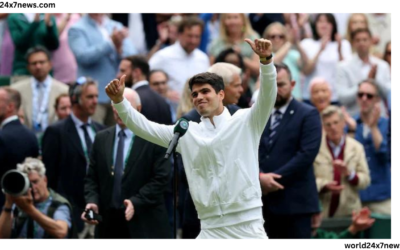White Men Can’t Jump 2023: Debunking Stereotypes
White Men Can’t Jump: Debunking Stereotypes and Embracing Athletic Diversity

Introduction:
The phrase “White Men Can’t Jump” has become a cultural trope, perpetuating the stereotype that individuals of Caucasian descent lack the athletic prowess and vertical leap associated with sports like basketball. The popular 1992 film of the same name starring Wesley Snipes and Woody Harrelson further solidified this notion in popular culture. However, it’s important to recognize that athletic ability is not determined by race or ethnicity. In this article, we will explore the history behind the stereotype, debunk its validity, and shed light on the importance of embracing athletic diversity.
The Origins of the Stereotype:
The stereotype of white men being less athletic or incapable of jumping originated from various factors, including historical biases and limited exposure to diverse athletic talents. In the early days of sports, racial segregation was prevalent, with opportunities for African American athletes often restricted. This segregation contributed to the development of stereotypes, as people had limited exposure to the athleticism of individuals from different racial backgrounds.
Debunking the Stereotype:
- Historical Examples: To dispel the myth, we can look at historical examples of exceptional white athletes who have defied expectations. Larry Bird, a basketball legend who played for the Boston Celtics, is considered one of the greatest players of all time, known for his shooting accuracy and basketball IQ. Similarly, Dirk Nowitzki, a German-born NBA player, showcased exceptional skills and won an NBA championship with the Dallas Mavericks. These athletes prove that race does not limit one’s ability to excel in sports.
- Contemporary Athletes: In recent years, numerous white athletes have risen to prominence across various sports, showcasing their athleticism and challenging stereotypes. For instance, snowboarder Shaun White, known as the “Flying Tomato,” has won multiple Olympic gold medals with his acrobatic skills. Additionally, tennis player Roger Federer has dominated the sport for years with his agility and precision. These examples demonstrate that talent and skill are not confined by race.
- Cross-cultural Influences: Sports are a global phenomenon, and the exchange of ideas and techniques transcends racial boundaries. Athletes from different backgrounds often learn from one another, leading to a fusion of styles and skills. This cross-cultural exchange results in a diverse pool of athletes who challenge preconceived notions about race and athleticism. The success of individuals like Jeremy Lin, an Asian American basketball player, highlights the importance of embracing diversity in sports.
Embracing Athletic Diversity:
- Breaking Barriers: By debunking stereotypes and recognizing athletic diversity, we create an environment that fosters inclusivity and equality. Encouraging individuals from all racial backgrounds to participate and excel in sports promotes a more accurate and positive representation of athletic ability.
- Overcoming Bias: It is crucial to acknowledge that stereotypes can perpetuate bias and hinder opportunities for individuals who do not fit the expected mold. By dispelling the myth of “White Men Can’t Jump,” we can dismantle these biases and create a level playing field where talent and skill are valued above preconceived notions.
- Celebrating Differences: Rather than focusing on stereotypes, we should celebrate the unique skills and abilities that individuals from diverse backgrounds bring to sports. Embracing athletic diversity not only enriches the sporting world but also promotes understanding and respect among different cultures and communities.
Conclusion:
The stereotype that “White Men Can’t Jump” is a baseless generalization that overlook














